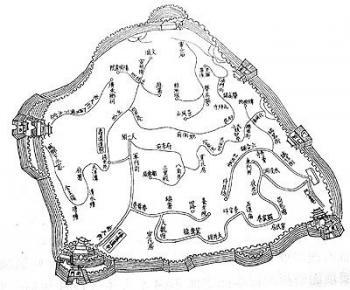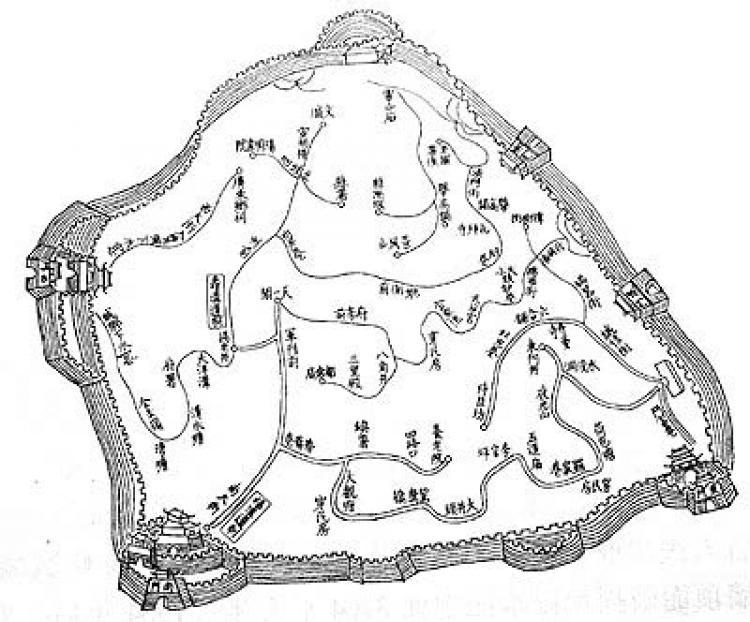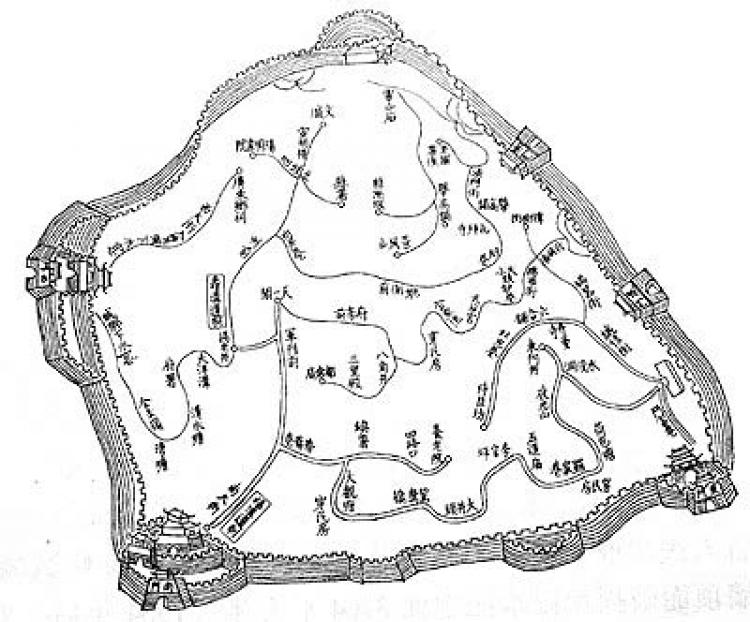A 900 year-old drainage system has saved a city in south China from severe floods that left more than 100 people dead and a million homeless across the region.
This summer’s torrential rain and flash floods have caused billions of dollars in damage. Nearly 40 people were killed this week alone in a series of landslides. Even the modern Three Gorges Dam, built to hold back 22 billion cubic meters of floodwater, is expected to be severely tested.
But the 100,000 residents of the ancient city of Ganzhou, in southern China’s Jiangxi province, are safe and dry, thanks to two drains built during the Song dynasty, which have proved far more effective than modern sewer systems at coping with the downpour.
According to historical records, Ganzhou used to suffer from serious floods. When Liu Yi was the Mayor from 1068 to 1077, he designed and built the streets of the city, and built the two drains according to the street layout and terrain features. He named the drains “fu” or fortune, and “shou” or longevity.
Two long tunnels, built using bricks with a total length of 7.83 miles, cross the city and channel floodwater into two ponds that function as reservoirs. The drainage system also uses the natural camber of the city to quickly channel water outwards.
The system provides comprehensive functions for urban sewage discharge, rain drainage and humidity control. The reservoirs, used to raise fish, and the sludge, used as organic vegetable fertilizer, form a natural environmental cycle.
Wan Young, an antique appraisal expert of Ganzhou City Museum of Heritage, said: “A water pump is generally used if the sewer slope is not high enough. However, the Fushou ditch takes advantage of the urban terrain difference to naturally direct rain and sewage into the river.”
Some experts estimate the ditch can handle additional 3 or 4 times the current rainwater and sewage treatment capacity.
Liu Yi was later promoted to a position equivalent to Deputy Minister of Water Resources in 1087.
Read the original Chinese article.
This summer’s torrential rain and flash floods have caused billions of dollars in damage. Nearly 40 people were killed this week alone in a series of landslides. Even the modern Three Gorges Dam, built to hold back 22 billion cubic meters of floodwater, is expected to be severely tested.
But the 100,000 residents of the ancient city of Ganzhou, in southern China’s Jiangxi province, are safe and dry, thanks to two drains built during the Song dynasty, which have proved far more effective than modern sewer systems at coping with the downpour.
Drains Built Before Western Crusades
According to historical records, Ganzhou used to suffer from serious floods. When Liu Yi was the Mayor from 1068 to 1077, he designed and built the streets of the city, and built the two drains according to the street layout and terrain features. He named the drains “fu” or fortune, and “shou” or longevity.
Two long tunnels, built using bricks with a total length of 7.83 miles, cross the city and channel floodwater into two ponds that function as reservoirs. The drainage system also uses the natural camber of the city to quickly channel water outwards.
The system provides comprehensive functions for urban sewage discharge, rain drainage and humidity control. The reservoirs, used to raise fish, and the sludge, used as organic vegetable fertilizer, form a natural environmental cycle.
Wan Young, an antique appraisal expert of Ganzhou City Museum of Heritage, said: “A water pump is generally used if the sewer slope is not high enough. However, the Fushou ditch takes advantage of the urban terrain difference to naturally direct rain and sewage into the river.”
Some experts estimate the ditch can handle additional 3 or 4 times the current rainwater and sewage treatment capacity.
Liu Yi was later promoted to a position equivalent to Deputy Minister of Water Resources in 1087.
Read the original Chinese article.







Friends Read Free